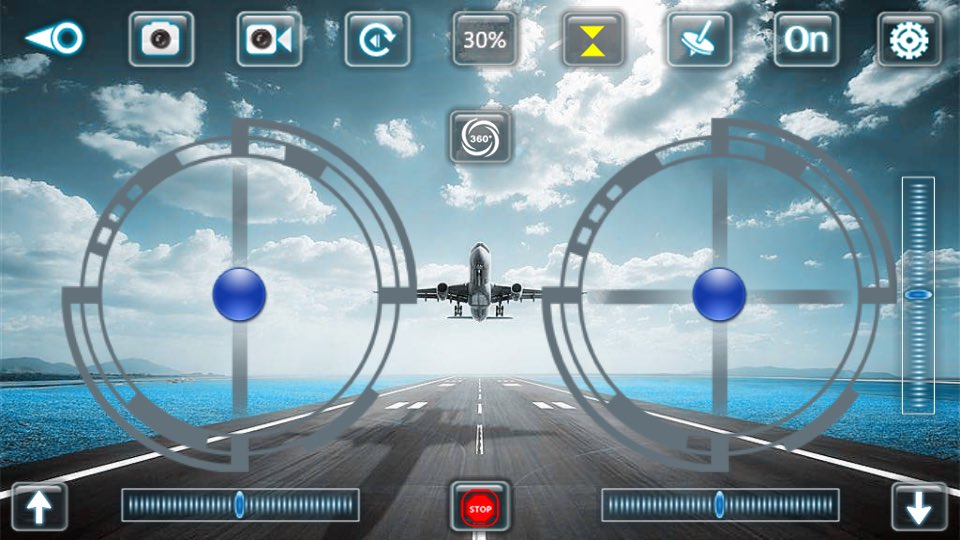Where can I fly my drone?
I remember the first day I flew my drone. In all the excitement and joy of owning my own bird and trying to carefully fly it I totally forgot that there were more rules around them than I knew.
It is usually good to do your research about drone rules and regulations before you decide to buy one. One of the most limiting rules is the restrictions on flying in specific areas. You are not allowed to fly drones near airports, prisons, or military bases. But that makes complete sense you would say.
But there are other places which may seem less obvious like National Parks, flying above sporting events, and restrictions on night flying for some people in the United States.
The Australian government does allow drones to be flown within 30 meters of people. The only people who can be within that range is the person navigating the drone and the person assisting in the navigation.
Europe has varied rules depending on the country you fly in and so does certain parts of Asia.
Whether you fly for recreation or professionally, you always have to be careful about the no-fly zones or else you have a chance of losing your license. Here are a few apps that can help you solve this problem:
1. UAV Forecast
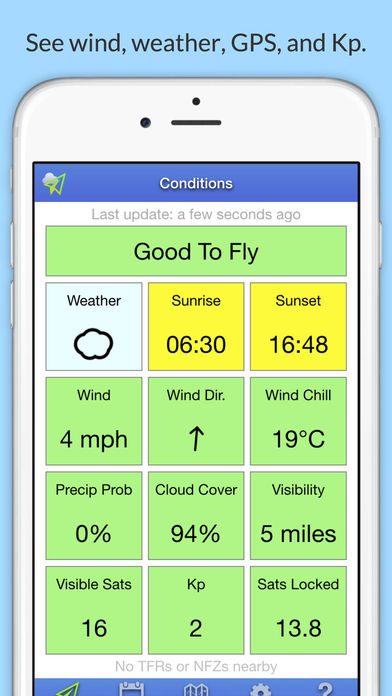
If you are looking for a free app that allows you to check for no-fly zones, then UAV forecast is a reliable app. It details restricted areas and also helps you with the weather forecast to ensure that you will be able to fly smoothly. With global coverage and real time information on flight restrictions, UAV forecast makes it easier to fly drones and be compliant with local regulations.
2. Hover – Drone and UAV pilot App
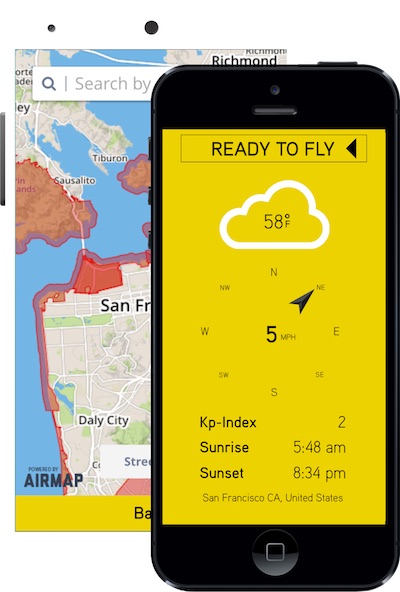
Hover is another app that supports global drone users. You can identify No-fly zones and check additional info like weather data, flight readiness indicator, flight logs and news feed related to UAVs.
3. DroneMate
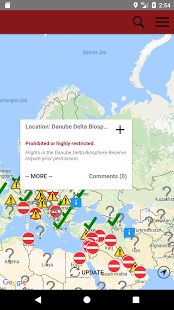
This is one of the most comprehensive and accurate source for drone laws, regulations, and details about which areas in a country you can fly drones. The app gathers information from official sources all over the world and compiles it for drone users to find out about no-fly zones and other drone regulations.
Those who travel frequently with drones will find this helpful. It is intended for those who use drones for recreational purposes. Professionals can get handy info but they may have to do further research of their own about professionally using a drone in a particular region.
4. DJI’s Built-in Fly Safe Geo Zone Map
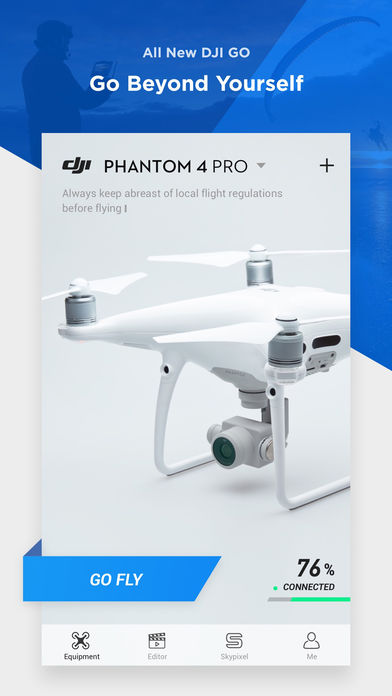
DJI has a very robust system that is built into the drone’s app where you will be able to find out areas where it is safe to fly and areas where flying can be restricted or where it can raise concerns.
It automatically limits your drone from flying into any area that is restricted or it gives you a warning in less restricted airspace. While some users may have the ability to override this function, unlocking it will not work in areas of high security. It always a good idea to have another app to check for flight restrictions in case DJI is not up-to-date.
USA – FAA’s B4UFLY
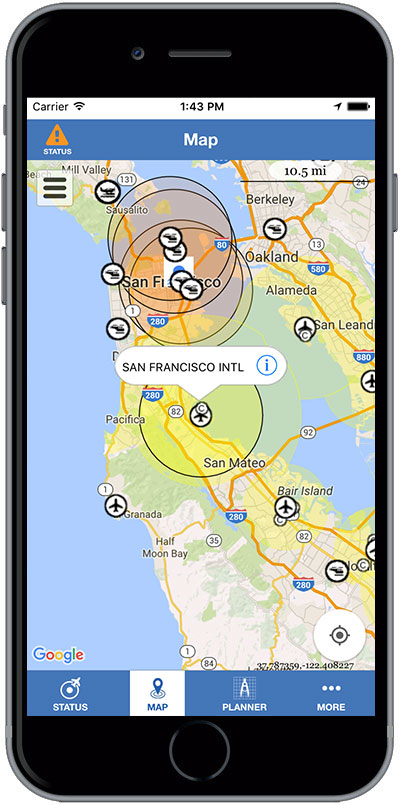
If you are flying within the US only, then FAA’s B4UFLY app is a good solution for finding where you can fly. It takes into account the model of the drone and various situations in the country to show indicators which can tell a person if they are allowed to fly in the area or not.
Australia – Can I Fly There App
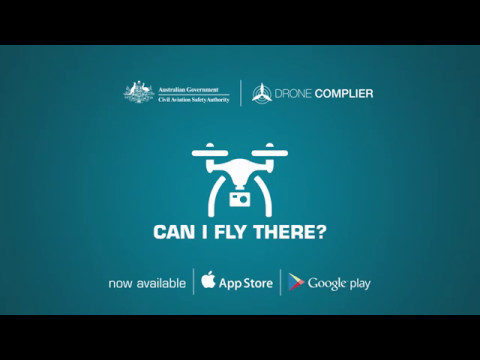
The Can I Fly There App is good for users flying drones in Australia. It is meant for commercial drone flyers who want to make sure that they fly in zones that are permitted. It also provides rules for recreational drone users.
UK – Drone Assist
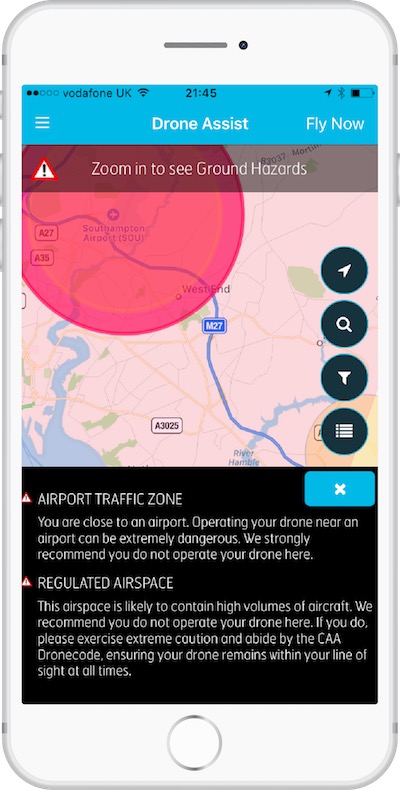
The app is created by the National Air traffic Control Services in collaboration with the Civil Aviation Authority in the UK. It intends to provide users with helpful information on no-fly zones and drone laws in the country, but the app has not been as successful as other apps that help you identify no-fly zones. If you are flying a drone in UK, you can use this free app, or you can download one of the apps that provide global information on drone no-fly zones.
Tips Before Flying
You can often fly closer to an airport if you get special permission from the air traffic control. Simply call them up and ask to see if you fly in their no-fly zone. They will usually allow you to if your request is reasonable.
Fines can be tens of thousands of dollars if you violate drone safety laws. Make sure you read up on local laws too before flying. Always use common sense and you will avoid the majority of problems. Most countries restrict flying above 400 feet and require that you maintain visual sight of your drone at all times.

